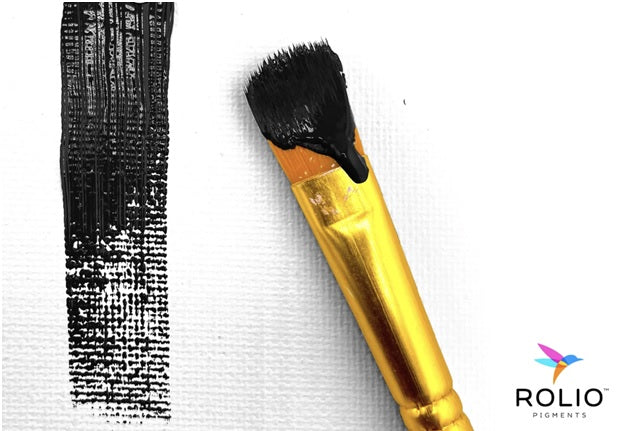Metallic effects give epoxy resin art a striking and polished appearance, bringing shimmer and rich color to your resin projects.
Whether you’re making tabletops, jewelry, or decorative items, using metallic pigments well can turn your work into something truly special.
This guide will cover all the basics of working with metallic pigments in epoxy resin, sharing tips and products to help you get great results.
What Are Metallic Pigments?
Metallic pigments are finely ground powders that reflect and bend light, giving resin pieces a shiny, metallic look. Unlike regular dyes or pigments, metallic powders add a sparkling effect that brings depth and richness to your work. They come in different types, such as classic metallics, color-shift (or chameleon) pigments that change color depending on the light angle, and iridescent pigments that give a pearly shine.
The key to creating eye-catching metallic effects is using high-quality pigments that mix smoothly and keep their shine after the resin hardens. Rolio Pigments offers pigments that spread evenly in epoxy resin without clumping or losing brightness, which is crucial for a flawless finish.
How Can You Choose the Right Metallic Pigments?
Choosing the right metallic pigment depends on your idea and the project you’re working on. Warm tones like gold, bronze, and copper add warmth and elegance, while silver and chrome give a clean, modern feel. For something different, color-shift pigments offer changing colors that catch attention from every angle.
Many artists like mixing metallic pigments with others like mica powders or neon pigments to create layered effects. For projects involving fabric, such as resin-coated textiles or mixed media art, metallic pigments can enhance textures and add a subtle shine without overshadowing the fabric’s natural look.
It’s also helpful to think about the pigment’s color temperature and how reflective it is compared to other materials. For example, warm metallics go well with earth tones for a balanced look, while cool metallics contrast nicely with deep blues or purples.
How to Prepare and Mix Metallic Pigments with Epoxy Resin
Before adding metallic pigments, mix your epoxy resin according to the manufacturer's instructions. Properly combining the resin and hardener is key to a strong, fully cured finish.
When adding metallic pigments, start with small amounts to see how opaque and shiny the resin becomes. Usually, 1-3% pigment by weight of the total resin is enough. You can add more for a stronger metallic look, but be careful not to add too much, as it might affect how the resin cures.
Using tools like an epoxy resin and pigment calculator can help you measure the exact amount of resin needed for your project and suggest the right pigment ratio for bright, balanced results.
Mix the pigment into the resin gently with folding motions to avoid creating air bubbles. For textile-based resin art, make sure the pigment spreads evenly to prevent stiff areas or uneven color on the fabric.
Techniques for Creating Stunning Metallic Effects
Here are some common ways artists bring out the best in metallic pigments with epoxy resin:
-
Direct Mixing: Blend pigments straight into the resin for an even metallic color throughout your piece.
-
Layering: Pour thin, tinted layers one after another, letting each cure before adding the next. This builds depth and subtle shimmer variations.
-
Swirling: Pour pigmented resin over a base layer and swirl it with a stick or brush before it sets. This creates marbled, dynamic patterns.
-
Color Shifting: Use color-shift or iridescent pigments alone or mixed with other colors to make surfaces that change appearance with light.
-
Combining Mediums: Mix metallic pigments with mica powders or translucent dyes to adjust how opaque or shaded the resin looks.
Metallic pigments bring unique texture and depth to resin artworks, making each piece visually captivating and rich with detail.
Simple Fixes for Metallic Pigment Troubles
Using metallic pigments can sometimes cause issues. Here’s how to handle them:
-
Clumping: If pigments clump, sift them before mixing or use a fine mesh strainer. Mix slowly but thoroughly to break up lumps.
-
Uneven Distribution: Stir gently but steadily to keep pigments from settling while the resin cures.
-
Dull Finish: Use fresh pigments stored properly. Avoid overmixing, as this can trap bubbles and reduce shine.
-
Extended Curing Time: Too much pigment can slow down curing. Stick to the recommended amounts.
-
Bubbles: Mix carefully to avoid air bubbles. After pouring, briefly use a heat gun or torch on the surface to release trapped air.
-
Color Fading: Metallic pigments can fade if exposed to too much sunlight. Use UV-resistant resin or keep finished pieces out of direct sunlight.
-
Pigment and Resin Compatibility: Some pigments don’t work well with certain resins and may cause discoloration or poor curing. Test first and use pigments made for your resin type.
Following these simple tips will help you avoid common metallic pigment issues and ensure a smooth, even, and vibrant finish every time.
Inspiring Project Ideas Using Metallic Pigments
Metallic pigments are very versatile and work well for many creative projects:
-
Epoxy Resin Tabletops: Make luxurious surfaces with metallic shine that looks like metal or stone.
-
Jewelry and Accessories: Add bright metallic accents to highlight small details.
-
Mixed Media Art: Combine resin-coated fabrics with metallic pigments for textured, shiny layers.
-
Soap and Candle Making: Include subtle metallic shimmer in handmade soaps or candles.
-
Coasters and Trays: Create eye-catching home accents with swirling metallic patterns.
-
Sculptures and Figurines: Add depth and shine to 3D pieces by mixing pigments into resin or paint.
-
Nail Art: Use fine metallic pigments for sparkling, custom nail designs.
-
Greeting Cards and Paper Crafts: Incorporate metallic pigments into resin or embossing powders for a luxe finish.
-
Furniture Accents: Highlight drawer pulls, knobs, or inlays with metallic pigment details.
-
Seasonal Decor: Use special pigment sets like autumn colors or tropical shades to fit different themes.
Metallic pigments add a unique touch to many types of projects, enhancing color, texture, and shine. Experimenting with different techniques and pigment combinations can help you create eye-catching effects that stand out.
How Can You Store Metallic Pigments Properly?
To keep your pigments in good shape:
-
Store them in airtight containers away from sunlight and moisture.
-
Keep them in a cool, dry place.
-
Label containers clearly for easy identification.
-
Organize pigments by color groups or types to make project prep easier.
Proper storage helps your pigments stay vibrant and mix smoothly whenever you use them.
Final Words
Getting great metallic effects in epoxy resin art means picking the right colors and using good mixing methods. Using quality metallic pigments and trying techniques like layering or mixing with mica powders will help you create pieces full of shimmer and depth.
Whether you’re working on tabletops, making jewelry, or handmade soaps, metallic pigment powders offer endless creative possibilities. With patience, practice, and the right products, you can achieve vibrant, professional results that grab attention every time.



